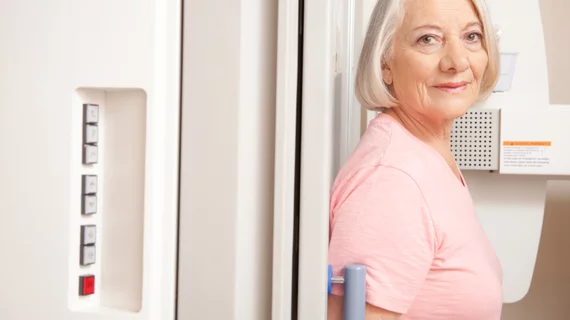DBT proves more effective, efficient than mammography alone
Women who opt for digital breast tomosynthesis (DBT) over mammography alone are likely to see lower recall rates, improved quality measures and shorter times to biopsy, researchers reported in Academic Radiology this month.
Though digital mammography has long been the standard of care for breast cancer screening, first author Nila H. Alsheik, MD, and colleagues wrote that it’s being somewhat outpaced by DBT, which produces quasi-3D data that improve lesion visibility.
“The enhanced characterization of lesions at DBT screening may lead to more streamlined diagnostic imaging, thereby improving cost-effectiveness,” Alsheik, an independent practitioner with Advocate Health Care, and co-authors said.
Those qualities are part of the reason some healthcare systems in the U.S. have overhauled their policies to favor tomosynthesis, the authors said, though others continue to use digital mammography or a combination of both, depending on patient characteristics and modality availability.
Alsheik et al. employed a learning health system—which leverages the experience of individual patients to improve care—for their research, which aimed to compare the outcomes of digital mammography alone with those of DBT or a combination of the two. The team analyzed 325,729 screening mammograms from 247,431 women across two healthcare systems over a two-year stretch.
“The core requirement of [a learning health system] is big data processing of digital health information from within and outside a healthcare organization to provide a new approach to determine diagnostic or treatment pathways and their resultant outcomes and costs,” the authors wrote. “Once both input and outcome information are known, predictive analytics can be applied to enable optimization and personalization of healthcare choices so that every patient follows the most effective and efficient diagnostic or treatment pathway based on the individual characteristics of the patient, the evidence base and the organization’s capabilities and outcomes.”
The research team extracted patient-level demographics, risk levels and clinical outcomes from BI-RADS and electronic medical records, comparing results for women’s characteristics, recall rates, times to biopsy and final diagnoses.
Nearly 60 percent of all screens were DBT, the authors reported, versus 40 percent that were digital mammography. Women with dense breasts and a higher calculated risk were more likely to be screened with DBT, and recall rates for the modality were around 2 percent lower than those for mammography. Physicians most commonly recommended patients to either mammography or ultrasound after recall, though DBT patients often proceeded straight to ultrasound.
Digital breast tomosynthesis also prevailed in median time to biopsy—18 versus mammography’s 22 days—and final diagnosis—10 versus 13 days. The adjusted cancer rate, cancer detection rate and specificity were all higher for DBT, suggesting it might be superior to established methods like digital mammography.
“Our data demonstrate a streamlined diagnostic imaging evaluation in the DBT cohort and sustained recall rate reduction across all patient strata,” Alsheik and colleagues wrote. “Improved imaging efficiency, decreases in false positives and improved cancer detection reinforce the value of DBT screening. Our diverse patient population and screening setting demonstrate that these improvements in outcomes are generalizable to all practice environments.”

